Baseboards
Posted
#248114
(In Topic #13687)
Full Member
Do we make them too 'heavy'
I have just been completing the boards for a new layout, usual (for me) 9mm ply top covered with cork and softwood frame. However, I've been distracted by a couple of you tube videos using much lighter materials, 6mm ply and framework for example and even a very interesting idea using cardboard. Has anyone else tried these lighter materials and if so what are their thoughts and conclusions?
Oh well back to the asylum
Posted
Inactive Member
Not tried card board, but I've seen foam board used, that's 5mm of foam sandwiched between two sheets of cardboard . It needed careful planning and used more pieces of the foam board than it would have being built in ply.I have just been completing the boards for a new layout, usual (for me) 9mm ply top covered with cork and softwood frame. However, I've been distracted by a couple of you tube videos using much lighter materials, 6mm ply and framework for example and even a very interesting idea using cardboard. Has anyone else tried these lighter materials and if so what are their thoughts and conclusions?
I use 75mm extruded polystyrene, framed with 5mm plywood, as the baseboard, then another sheet of the polystyrene on top which is carved into, lumps of polystyrene above that, to produce a landscape above and below the track level. It produces a very light baseboard..
Now I've finally started a model railway…I've inherited another…
Posted
Full Member
As a club President, I followed through with an idea for a portable layout which I outlined here -
http://xdford.freeasphost.net/stag19.html although this set of pages is not as long as the original. That layout is now in the possession of another small club but it was a good lead in for our junior members in particular at the time.
We went on to build another foam block in 2 halves in On30, mainly driven by myself and another member (I was not President by that time) and one of the other exhibitors was quite incredulous that when it cam to pack up time, I lifted BOTH boards and carried them out… The construction is a bit more obvious in the third pic with the foam shown at the side.
Attached are a couple of pics of that layout, I too was thinking of experimenting with foamcore modules in a similar vein to T Trak. The On30 stuff shown is all mine, bought to help out the club in its fledgling stages. It now does duty around the Xmas tree,
Cheers
Trevor
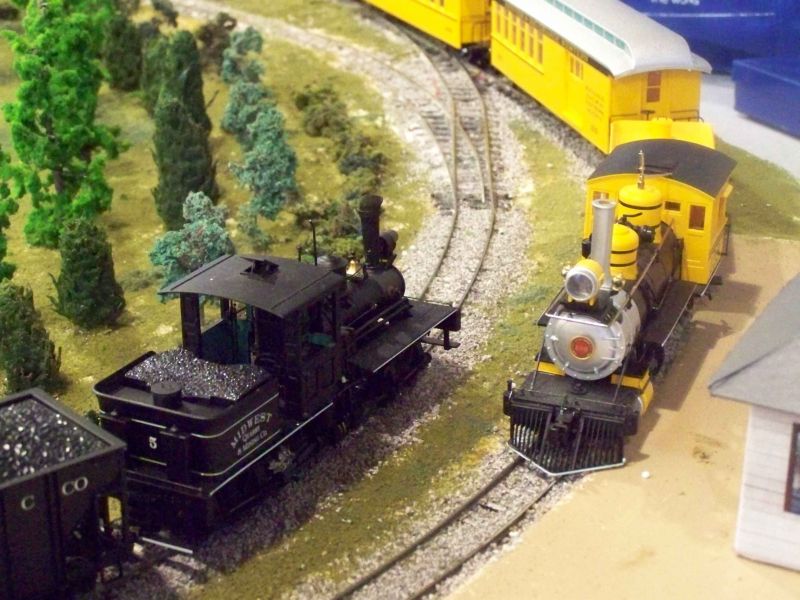
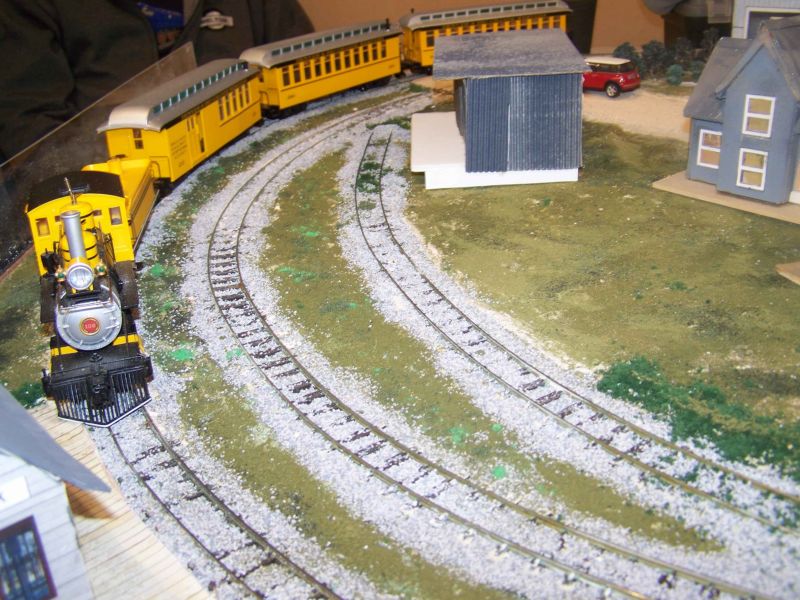
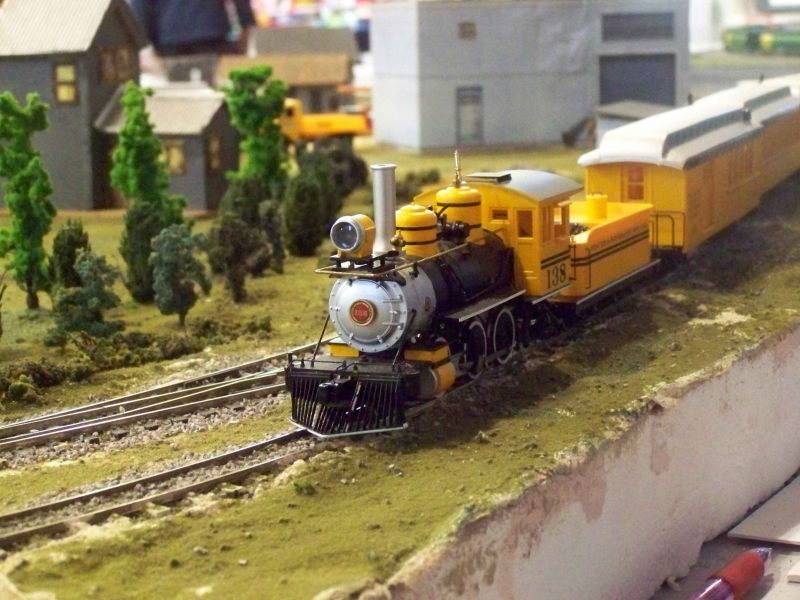
 Last edit: by xdford
Last edit: by xdford
Posted
Full Member
Nigel
©Nigel C. Phillips
Posted
Full Member
Yes, the ply surface does make them heavy but it is very strong and easy to work with accepting most things we'd want to knock into it, or glues we'd like to use.
I did experiment with this ply framed modular system that was both strong and much lighter but took an age to build.
This is the bottom panel, glued and pinned to give the rigidity:
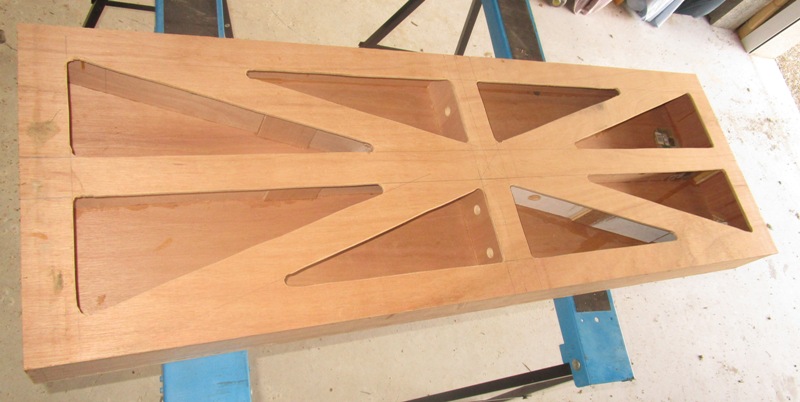
This is what's underneath that "Union Flag" strengthening panel - again upside down, the top surface being ordinary ply:
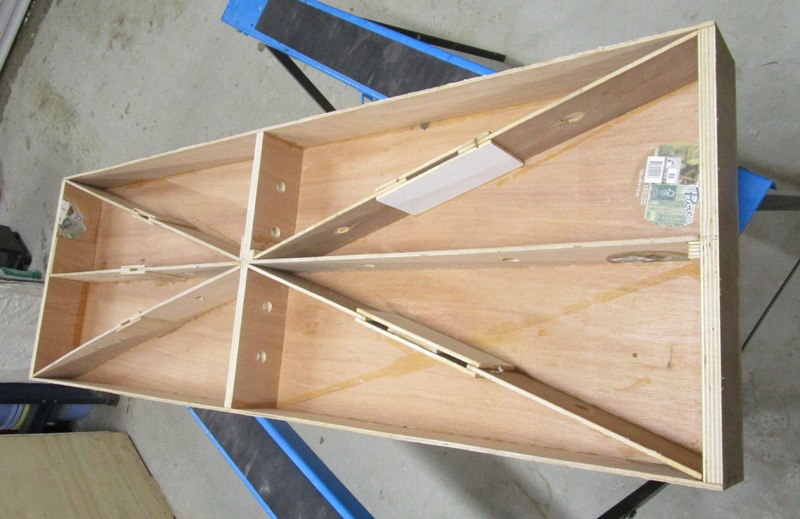
My currently favoured "ply girder" framework. The surface (ply) is fixed to risers allowing for both above and below scenic work:
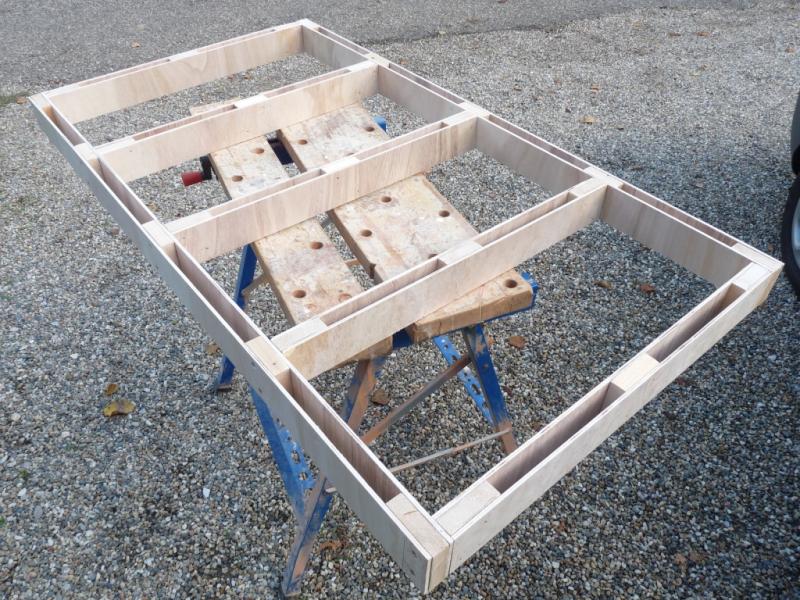
'Petermac
Posted
Site staff

Bit expensive, but everything was cut a lot straighter than I could ever do, went together easily and they are fairly light.
His website is being redeveloped but the link is below anyway.
This website is still under construction.
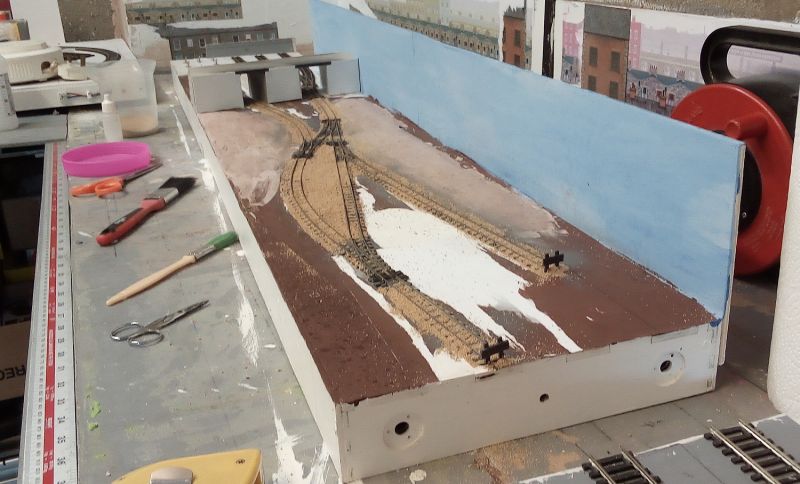
Ed
Posted
Full Member
Oh well back to the asylum
Posted
Full Member
Staying on the thread Kevin.
1 guest and 0 members have just viewed this.

